Varicose veins can be a major ailment if left untreated. Taking care of varicose veins as you age is very important. This guide will tell you what and how to do
Contents
There are so many ailments that make people’s lives a misery, and one among them is varicose veins. You might have heard about it quite often, and it might not sound as serious as cancer or kidney disease.
However, if overlooked and not taken care of, varicose veins can be of immense trouble and pain. It might even require surgical intervention.
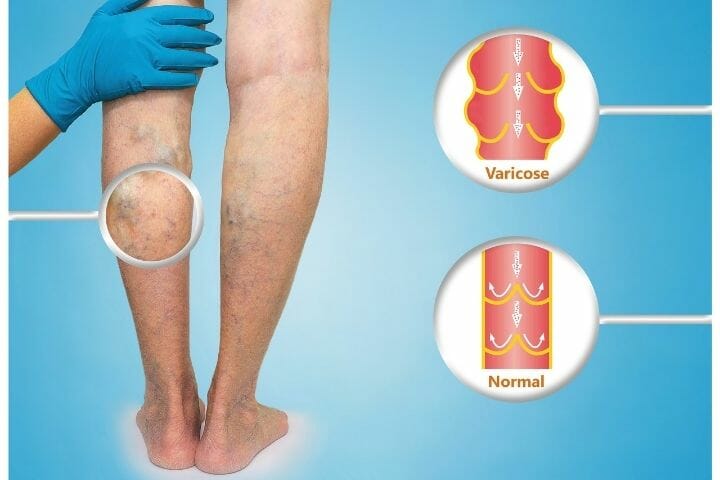
Varicose Veins
Nearly 23% of American adults have Varicose veins. The varicose vein is a condition that causes swollen and raised blood vessels that can be seen most commonly on the legs. Varicose veins are quite a painful condition, and you must not overlook it at any cost.
Varicose veins might have long-term implications if you do not treat and take care of them as you age and make your life a painful one.
However, to control and treat Varicose veins, you need to understand them in detail. Read on as we discuss the various causes, symptoms, treating methods, and most importantly, how to take care of varicose veins in the best way possible.
You might like to read: Guide to Choosing Stand Assist Devices for Seniors
Causes of Varicose Veins
There could be multiple causes of Varicose veins, and some of the common ones among them are as below:
- Heredity: Your family history might be a reason for you to get varicose veins. If your parents had it, there is a very high chance that you might have it too.
- Gender: It has been found that women are more at risk with varicose veins than men. It is mainly owing to hormonal changes, birth control pills, etc.
- Obesity: Being overweight or obese is another reason to get a varicose vein. If you are overweight, pressure is exerted on your feet to carry the body weight, which may cause the condition.
- Pregnancy: A pregnant woman is at high risk of getting a varicose vein. It is mainly as the body volume increases during pregnancy, and there are quite a lot of hormonal changes during this period.
- Profession: If you need to stand or sit for long durations, it might cause varicose veins. It might lead to severe conditions if not treated at the right time.
- Age: Varicose vein is age-related. Aging is associated with the veins and valves losing the ability to work, and the risk factor of varicose veins increases.
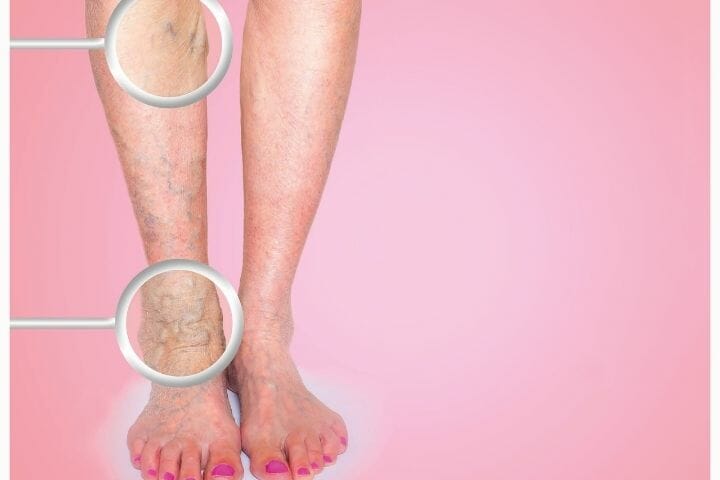
Symptoms of Varicose Veins
You might be at a high risk of having varicose veins, and hence such pains should not be overlooked at any point in time. Some of the common symptoms of varicose veins are as follows:
- Cramping in the legs
- Aching sensation in the legs
- Restlessness
- Burning sensation in the calf muscles and leg in general
- Throbbing pain
- Tingling sensation in the legs
- Legs might feel heavy
- General tiredness and fatigue
Some symptoms in women might be more prominent during the menstrual cycle or even during pregnancy.
A few lesser-known symptoms of varicose veins are as follows:
- Skin darkening
- Ulcers
- Swelling near ankles
- Painful blood clotting
How To Take Care of Varicose Veins As You Age
As already discussed, the risk factor of varicose veins increases as one age, they should take care of your already existing condition. Some of the ways you can take care of varicose veins and prevent them from getting worse are as follows:
Understanding the cause of the condition:
To begin with, you must understand the root cause of your condition. Is it hereditary? Even if you are sure that your parents had it and so you do, you must dig deeper and understand if there could be any other reason behind it.
Are you obese? If yes, then that could be a reason for the condition. So technically, you cannot overlook any of the probable causes leading to it before being 100 percent sure.
You might like to read: Best Bed Socks For The Elderly
Exercise regularly:
Once you have determined the probable cause of your varicosity, you must ensure that you do regular exercise to prevent your condition from getting worse. By exercising, we do not mean just weight loss exercise if obesity is the reason for your varicosity.
Exercising would refer to being active and moving more. Most importantly, you must include strength exercises for the calf muscles.
It will help strengthen your calf muscles and help your varicosity stay under limits. Any kind of standing or sitting posture for too long might be detrimental to your varicose vein and hence should be avoided.
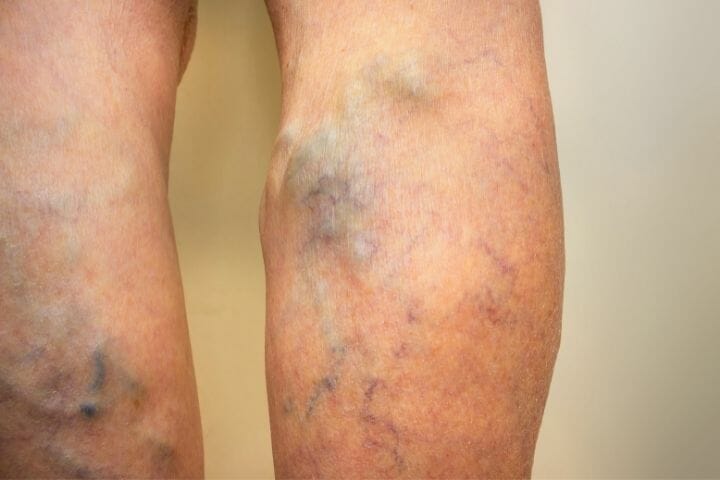
Keep a check on your weight:
Another associated concern with varicosity is your weight. You must keep a proper check on your weight to ensure that the leg muscles are not overburdened to carry your weight.
Keep your leg raised when seated:
Keep your leg elevated when you are sitting or lying down to ensure proper blood circulation in your legs.
Heat and Compression:
Use a hot water bath or compress your leg with the heat regularly to ensure that you do not suffer too much due to the pain caused by the varicose vein. Compression also helps to relieve any inflammation or avoid severity due to varicose veins.
Treating Varicose Veins
In severe or painful conditions do not hesitate to take medical advice. There are various treatments available for varicose veins depending on the kind and severity of your symptoms. Treatments are categorized below based on the severity.
You might like to read: Does CBD Work for Restless Leg Syndrome
Mild symptoms
In mild symptoms the treatment of varicose veins include:
- Wear compression stockings during the day and remove them at night before sleeping to ensure improved blood flow in the legs.
- Keep your leg elevated to ensure good blood circulation.
- Leg exercises to improve calf muscle strength and reduce the severity of varicose veins.
Moderate symptoms
If compression stocking and mild treatments do not work and pain persists, the following treatments are done for varicose veins. These are non-surgical treatment methods for varicose veins.
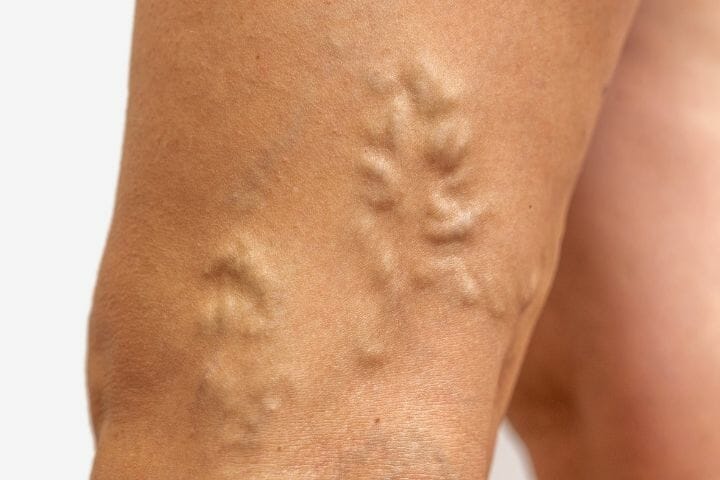
Severe Conditions
In severe conditions, you might need surgical intervention to relieve you from the pain caused by varicose veins. Some of the treatments are:
- Ambulatory phlebectomy: If your varicose vein is just below your skin surface, surgery can remove it. Cuts are made on the skin surface, and hooks are used for pulling the vein out of the leg.
- Surgical Ligation: If you have large and bulky varicose veins to be treated they can be blocked and removed permanently from your body using this kind of surgical intervention. You might take a month to recover from the condition.
Untreated Varicose Veins
You must pay special attention to varicose veins. If such varicose veins are untreated, they might lead to one of the following severe conditions.
- Skin ulcers: If the blood keeps collecting in these veins, ulcers form, which can be painful and difficult to heal.
- Deep Vein Thrombosis: The condition refers to blood clots in deep veins of the legs. It might lead to severe conditions and even be fatal in some conditions if they are untreated and the clot travels to the lungs, known as pulmonary embolism.
- Superficial thrombophlebitis: It occurs right below the skin as the blood clot causes tenderness to the skin.
- Bleeding: The skin surface above the vein gets thin in some conditions. It might lead to bleeding. The bleeding can occur even with the smallest of injuries.
You might like to read: Which TENS Machine Is The Best – Top 10 Compared
Wrap Up
Now that you have understood what the varicose veins are, you must take proper care to ensure that you do not reach the server conditions related to it.
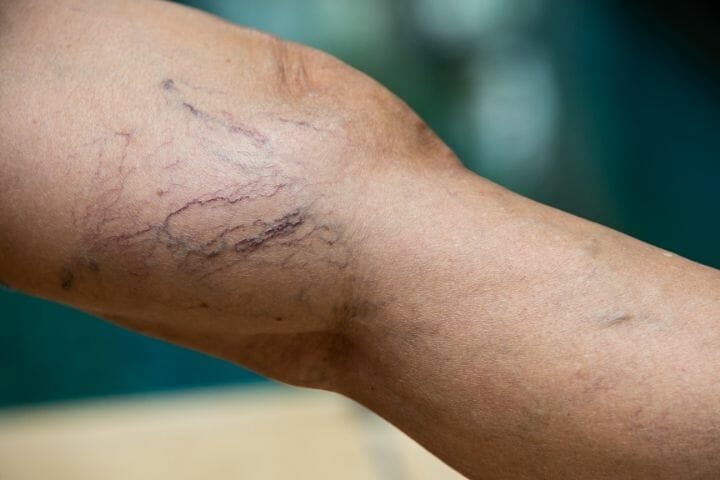
Exercise regularly, have a low salt diet, keep your weight in check, and in case of severity, do contact your doctor at the earliest to ensure that you do not aggravate your condition.
Taking proper measures to avoid any severity associated with varicose veins can help you avoid any surgical intervention or complex therapies. Don’t wait till it is too late to treat your varicose veins.
